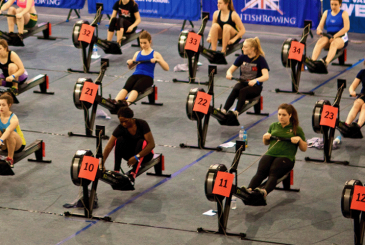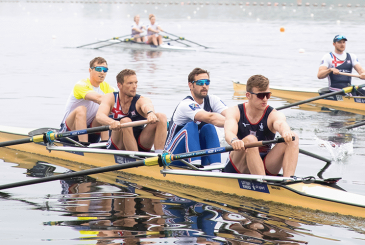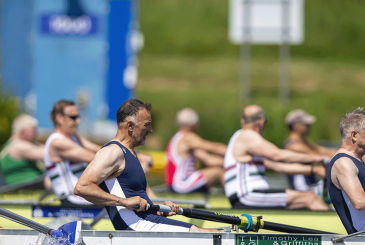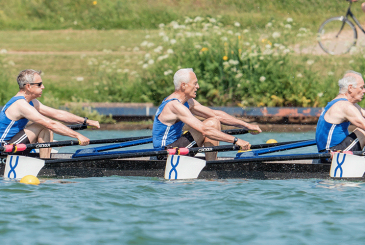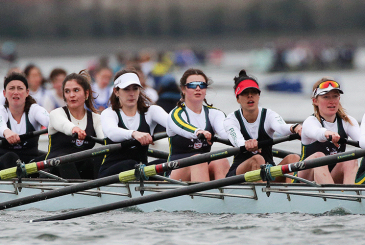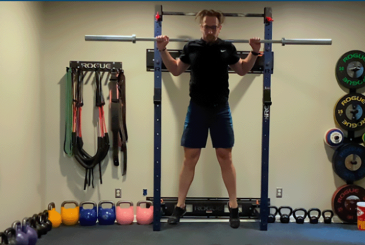Gareth Turner, GB Rowing Team Sport Scientist, explores the research behind monitoring your training load and offers solutions for how coaches and athletes can do this
There is increasing evidence to suggest that prolonged periods of high training load and spikes in training load are associated with increased incidence of illness. Similarly, there is some evidence that low training loads or no training are also associated with an increased risk of illness compared with a moderate training load. Therefore, it is important that coaches and athletes understand what stress and load different training modes equate to.
The ‘T2minute method’ enables coaches and athletes to programme cross training sessions with more accuracy
Training load can be monitored externally – the work completed by the athlete (e.g. power, split or pace) and internally – the relative physiological and psychological stress e.g. heart rate (HR), lactate or rate of perceived exertion (RPE). The area was reviewed in 2014, with the research concluding that load monitoring can be an important means of reducing the risk of illness.
Australian researcher, Dr Jacqueline Tran, developed a method for quantifying training load in rowers. This ‘T2minute method’ provides an overall training load score for each session by multiplying the duration of the session, and with mode-specific and intensity-specific weighting factors.
The mode-specific weighting factors were developed by a working group of experienced sport scientists and national coaches within the Australian Institute of Sport rowing programme to reflect the relative stresses imposed upon rowers when training in a variety of modes. The intensity factors were determined from the curvilinear relationship between power output, training intensity and blood lactate. The T2method was then validated against established heart rate and RPE-based methods of quantifying training load.
The method enables coaches and athletes to programme cross training sessions with more accuracy, taking into consideration the programmed external training load of the session.
Extra importance should be placed on training-load monitoring during the winter months
Table 1 illustrates a session load of 54 units for a 60-minute, low intensity, on-water rowing session. Taking into consideration the mode-specific weighting factors, different training modes will take different amounts of time to achieve roughly the same training session load.
| Session load | Mode-specific factor | Time required (min) | |
| On-water rowing | 54 | 1.0 | 60 |
| Rowing machine | 55 | 1.35 | 45 |
| Static cycling | 55 | 0.95 | 64 |
| Road cycling | 54 | 0.8 | 75 |
| Running | 54 | 1.4 | 43 |
Table 1: Mode-specific weighting factors using the T2method
Reproduced from (Tran et al. 2014)
Likewise, the programmed training intensity will have a marked effect of the overall session load. The table below highlights the expected session load of four different sessions on the rowing machine – 60 minutes of light aerobic training including 3 x 5 minutes at varying intensities.
| Total time (min) | Intensity factor | 3 x 5 load | Total session load | |
| Moderate aerobic | 60 | 1.0 | 20 | 75 |
| Heavy aerobic | 60 | 1.35 | 27 | 82 |
| Threshold | 60 | 2.1 | 43 | 97 |
| Maximal | 60 | 5.0 | 101 | 156 |
Table 2: Intensity weighting factors using the T2method.
Reproduced from (Tran et al. 2014)
Whilst coaches can estimate the external training load placed on the body when they write a training programme, athletes must take responsibility for monitoring the internal training load. Recording HR and RPE are two simple methods to monitor training status.
Buchheit et al (2014) concluded that the resting HR may indicate an athlete’s readiness to perform while an exercising HR assesses aerobic fitness and chronic adaptation, although both are subject to variation and error. Haddad et al (2017) also reported that session-RPE has been shown to be a valid, reliable, and very useful tool for training load monitoring in combination with other physiological parameters, such as HR.
Extra importance should be placed on training-load monitoring during the winter months.
Overall training volumes are often higher, and the cold weather stresses the immune system, leaving you exposed to illness. Even if you are working from home and training in lockdown, coughs and colds can still be transported by family members and house mates.
In Recommendations to maintain immune health in athletes, Professor Neil Walsh, from Liverpool John Moores University, offered 10 practical recommendations to avoid infection and maintain immune health:
- Try to avoid sick people, particularly in the autumn-winter
- Ensure good hand hygiene and appropriate vaccination
- Avoid self-inoculation by touching the eyes, nose, and mouth
- Do not train or compete with ‘below-the-neck’ symptoms
- Monitor and manage all forms of stress including physical and psychosocial
- Carefully manage increments in training stress
- Replace overly long training sessions with more frequent spike sessions
- Plan a recovery or adaptation week every second or third week
- Aim for at least seven hours of sleep each night
- Eat a well-balanced diet and avoid chronic low energy availability
Over the next few weeks, there is a great opportunity to complete a consistent block of endurance training and come out on the other side fitter and stronger. The GBRT Sports Science Team, athletes and coaches learnt a huge amount from lockdown 1.0, much of which is still being practised today.
As a team we will continue to record external and internal markers of training load, to inform discussions with coaches and athletes.
Reduced illness typically results in a higher percentage of training programme completion, and an increased likelihood of improvements in performance.




